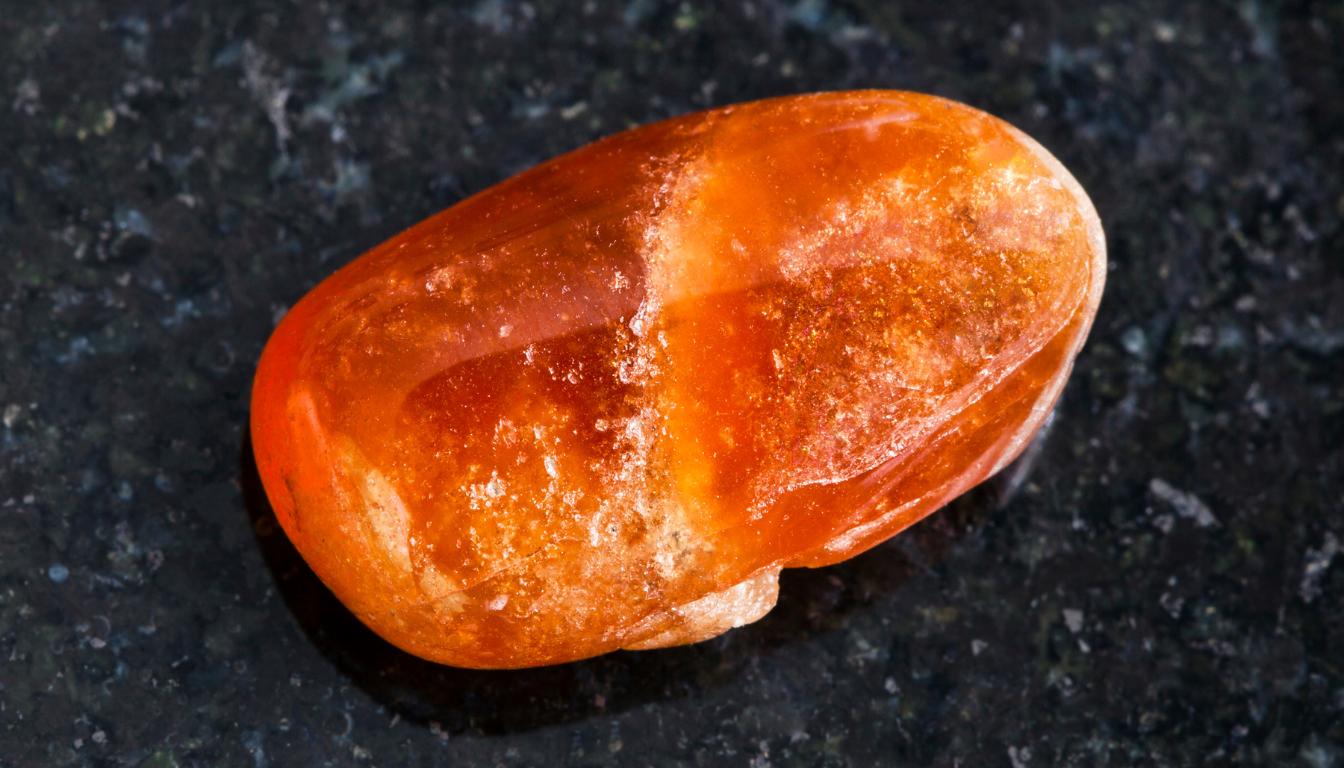While spessartite or spessartine garnets are rather rare, the gem-quality stones are usually sighted in shades of orange to reddish brown. Though these two are the most common, there are a few other names that spessartite garnet goes by; Some of the names are; Fanta garnet, for the bright orange mandarin spessartite garnet bear. As for the other shades, for instance, reddish-orange or brownish-orange result from the additional presence of iron traces in the gems.
Such iron inclusions are present in the stone to such a degree that stones that have no inclusions of other minerals are given the name of pure orange spessartites, costing drastically more. Anomaly and inclusion are not rare in Spessartite and will also affect the price of the stone as well. The most frequent ones will be wavy feathers which arise in the gems because of the traps of the drops of liquid in the gemstones. Asterisms, the star-like pattern on the stone due to inclusion within the stone, are again frequently observed in both types of stones.
Such addition, on the other hand, can also enhance the value of the gemstone in more ways than one. Another key optical feature of Spessartite is it has a high RI or the amount of refraction that happens in a certain substance; the higher the RI the higher the dispersion or the gemstone brilliance; and Spessartite garnets are unusually brilliant. Due to this fact, Spessartite, when used with diamonds looks brilliant and is among the favorite gems of many women.
Spessartite is one of six recognized species of garnets: including spessartite, pyrope, almandine, grossular garnet, andradite, and uvarovite. This paper examines the physical and background properties of the object under consideration, which is spessartite garnet, its historical aspect, and its significance in the modern world.
Table of Contents
Geological and Mineralogical Characteristics
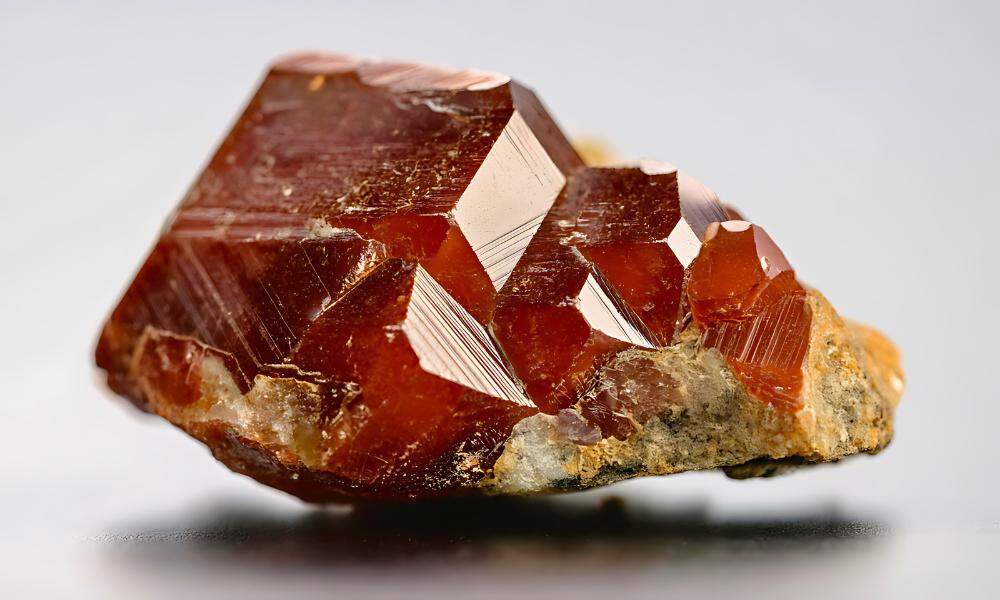
Composition and Structure
The type of garnet that is associated with the Spessartite is a manganese‐aluminum silicate classified under the garnet group of minerals which have similar crystal structures but differ in their compositions. This mineral may be classified as garnet whose general formula is X3Y2[SiO4]3 where X and Y are different types of metal cations that occupy different positions in the crystal lattice.
For spessartite, the formula is Mn₃Al₂(SiO₄)₃. In this composition:
- The X-site in the crystal lattice is occupied by Manganese (Mn) thus determining the color of spessartite.
- Aluminum (Al) occupies the Y-site; this holds cop comparative position in offering a firm structure to the mineral.
Spessartite garnet is an isometric mineral, it crystallizes in the cubic system in which all the crystallographic axes are of equal lengths that is, the axes are equal and the angles between them are right angles. This structure comprises silicon-oxygen tetrahedra connected by manganese and aluminum octahedra and is considered to be rigid and geometrically balanced; the elements play a role in the mineral’s hardness and shimmering quality.
Physical Properties
Color: Spessartite garnet is famous for its brightness and is mainly characterized by its color which varies from absolutely orange to reddish-brown shades. This is why they are characteristically intensely colored especially due to the influences of manganese content. Greater demand is created by clean and bright oranges and strong, deep reds that contain hints of brownish or yellowish shades.
Hardness: According to the Mohs scale, spessartite garnet has a hardness of 7 to 7. 5. This level of hardness makes it appropriate to be used in several jewelry-related functions, although it should be handled carefully, especially when it comes to scratching and abrasion. They are relatively hard and can easily withstand daily use hence are used widely in preparing rings, necklaces, and other valuable items of jewelry.
Density: Spessartite garnet has a relative density whose scale is usually from 4. 1 to 4. 3 g/cm³. Still, this relatively high density can be explained by compact crystal packing typical for this mineral, which allows Bergren to set massive gemstones with a rather weighty feel.
Cleavage and Fracture: Spessartite garnet does not have marked cleavage here which means that it does not split preferentially in any direction. It generally takes a mineral known as conchoidal fracture that is, the outer surface of the material shatters in smooth curves or arcs. This characteristic is even more desirable when cutting and polishing into any of the gem-shaped forms.
Formation and Occurrence
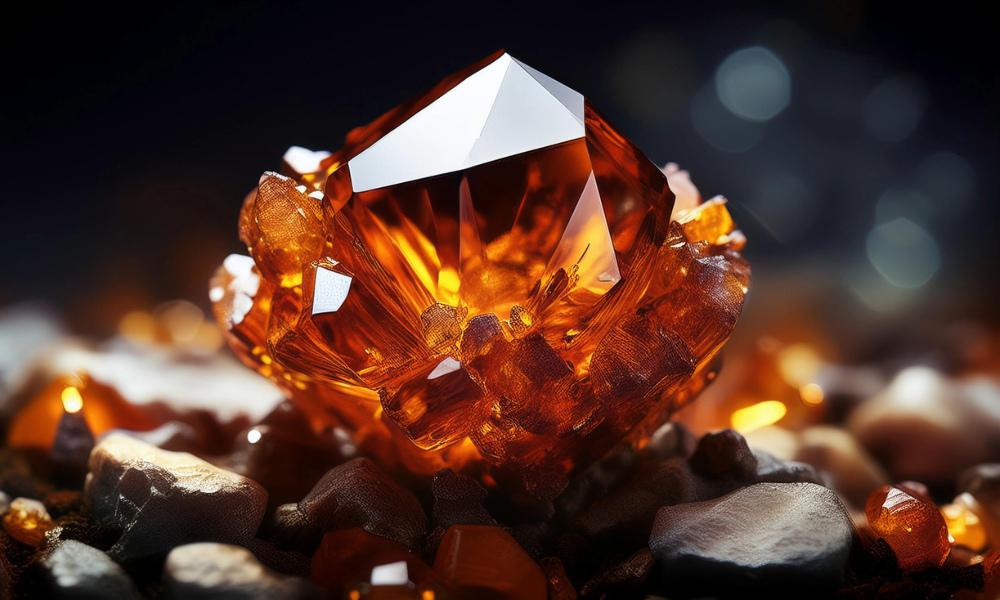
Crystal System and Habit
Crystal System: The kind of spessartite garnet is crystallized in the isometric system. The geometry of this system is three equal orthogonal coordinates and this makes the crystal take nice shapes as dodecahedra with 12 faces and trapezohedra with 24 faces. Such equally balanced shapes are valued in the cutting of gems in many cases.
Crystal Habit: In nature, SHG can be perfectly crystalline or occur as granular and massive varieties including spessartite garnet. The highest regarded are those that have faces neat and are well etched with sharp edges when polished to become gemstones.
Geological Formation and Occurrence
Geological Formation: Spessartite garnet is a gemstone that is encountered in a given geological environment. It is commonly associated with both metamorphic and igneous environments: It is commonly associated with both metamorphic and igneous environments.
Metamorphic Rocks: The spessartite garnet may be found in metamorphic rocks such as in schists and gneisses often occurring in high-temperature and high-pressure conditions. These environments help in the formation of garnets from metamorphosed precursors.
Igneous Rocks: It also forms in some igneous rocks that include granite and syenite pegmatite’s alternative names are aromatic sulfoborate, borosulfuric, and bromium. Here, the mineral spessartite garnet crystallizes as the magma turns into a solid, for this reason, one may find it intergrown with other minerals.
Occurrence: There are resolution resources of spessartite garnet in different parts of the world as shown in the following places. Prominent examples of recalled areas are Brazil, Nigeria, Madagascar, Sri Lanka, and the American Southwest. The conditions under which they form are rather narrow and, thus, high-quality specimens of this gemstone are not so frequently encountered on the market which in return, adds to its value.
Gemological Characteristics
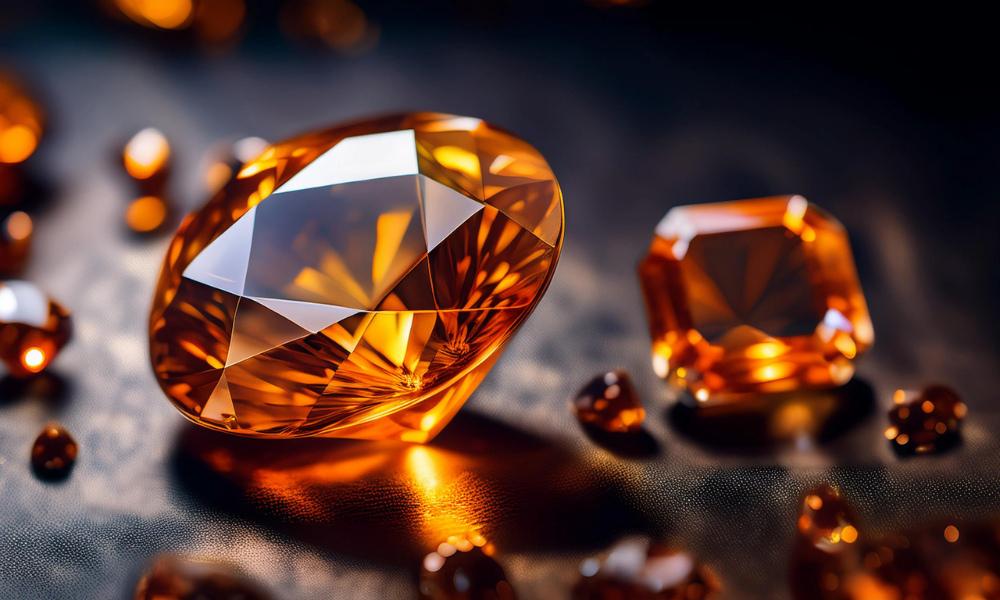
Spessartite garnet due to its rich and intensive colors is used to create stylish and beautiful fine jewelry. They include those gemological properties that go a long way in determining the beauty that is associated with it, the value that is attached to it besides the purposes that it is put to. Below is a detailed overview of these characteristics:
1. Color
Range: Spessartite garnet is universally prized for the incident light cover which stacks from bright orange to a reddish-brown deep color. The intensity and hue of the color are decided mostly by manganese as a constituent of the glass. The best specimens of garnets that have not mixed with any other color are usually of a fairly vivid ‘Mandarin’ garnet hue and markedly fiery.
Color Distribution: The color is generally uniform in spessartite garnet but sometimes there could be color gradation or color layering. When it comes to quality, the best gemstones should be uniform in color, and definitely distinct in their saturation.
2. Clarity
Transparency: When it comes to the optical characteristics, it is usually reported that Spessartite garnet is transparent to translucent. Mint coins that are to be graded have to be basically of very high quality, thus they are clear and have no inclusions that, can be seen, thus making them brilliant in their appearance.
Inclusions: Points of Tradition in Spessartite Garnet Other inclusions in Spessartite Garnet are minute crystals, gases, and occasionally minute cracks within the stones. Such inclusions will differently affect the clarity and therefore the value of the gemstone. Ideal spessartites have very few inclusions to give them the kind of appearance that is clear and sparkly.
3. Cut and Shape
Spessartite garnet due to its rich and intensive colors is used to create stylish and beautiful fine jewelry. They include those gemological properties that go a long way in determining the beauty that is associated with it, the value that is attached to it besides the purposes that it is put to. Below is a detailed overview of these characteristics:
Color: Spessartite garnet is universally prized for the incident light cover which stacks from bright orange to a reddish-brown deep color. The intensity and hue of the color are decided mostly by manganese as a constituent of the glass. The best specimens of garnets that have not mixed with any other color are usually of a fairly vivid ‘Mandarin’ garnet hue and markedly fiery.
The color is generally uniform in spessartite garnet but sometimes there could be color gradation or color layering. When it comes to quality, the best gemstones should be uniform in color, and definitely distinct in their saturation.
Clarity: When it comes to the optical characteristics, it is usually reported that Spessartite garnet is transparent to translucent. Mint coins that are to be graded have to be basically of very high quality, thus they are clear and have no inclusions that, can be seen, thus making them brilliant in their appearance.
Points of Tradition in Spessartite Garnet Other inclusions in Spessartite Garnet are minute crystals, gases, and occasionally minute cracks within the stones. Such inclusions will differently affect the clarity and therefore the value of the gemstone. Ideal spessartites have very few inclusions to give them the kind of appearance that is clear and sparkly.
4. Refractive Index
Range: The refractive index of spessartite garnet ranges as low as 1. 80 to 1. 82. This property determines the extent to which light is refracted as it enters the gemstone and plays an important role in the stone’s brilliance. The direction of the cut of the spessartite garnet determines its brilliance and fire more than anything else. The gemstone comes in different shapes which include round, oval-shaped, cushion, strand, and pear-shaped. The selected cut is most preferred depending on the raw shape, color, and purpose of the stone on jewelry.
Brilliance: Because of the high RI and separation, the spessartite garnet that is well-cut shows the features of brightness and light flashes. Even a small cut may add value to the gemstone increasing brightness, and bringing out the true color of the stone.
5. Dispersion
Fire: The dispersion for the spessartite garnet is roughly about 0. 027, which is below that of some other gemstones, but can give a perceptible fire or the actual dispersion of light into different colors. This particular attribute further boosts the aesthetics of the gemstone through a range of seemingly electric colors in a direct light source.
6. Hardness
Mohs Scale: Spessartite garnet ranges from 7 to 7. That is because it falls at number 5 of the Mohs scale of mineral hardness. At this hardness, it is ideal for use in jewelry and other such products, however, it should be easily handled and not scraped or scratched. This arises in a way that spessartite garnet retains its shine as well as blemish-free complexion for quite a long time hence the term hardness.
7. Specific Gravity
Range: The s. g. of spessartite garnet varies usually in a range between 4. 1 and 4. 3 g/cm³. This value gives the actual weight to the gemstone and contributes to a dense and heavy feel of the stone. The higher density is coupled by its hard and well-developed crystal lattice.
8. Pleochroism
Spessartite garnet usually has low beret: it does not have a strong color-changing ability depending on the position of vision. This characteristic is different from some of the other gemstones with noticeable differences in color when the gem is viewed from different angles.
9. Luminescence
Fluorescence: Spessartite garnet shows very low or negligible response to ultraviolet (UV) light it does not fluoresce. This absence of fluorescence might be useful when differentiating it from other garnets or man-made gemstones based on gemological tests.10. Treatments
Natural Status: Spessartite garnet is usually generally not heat treated or treated in any elaborate manner because it exists in its natural state. Nevertheless, as it is with most gems, it can be polished or cut in the standard ways, to make it look pleasing to the eye.
Heat Treatment: As for spessartite garnet, it is rarely treated, although some garnets are exposed to heat, in order to enhance the shade or brilliance. The natural style spessartite garnet is generally sought after in unheated form.
11. Identifying Spessartite Garnet
Gemological Testing: To decide that it is a spessartite garnet, the gemologists make use of a refractometer for the purpose of measuring the refractive index and specific gravity test for density. Optical spectroscopy as well as microscopic analysis can also be used to determine other characteristics and inclusions of spessartite garnet.
Historical Significance
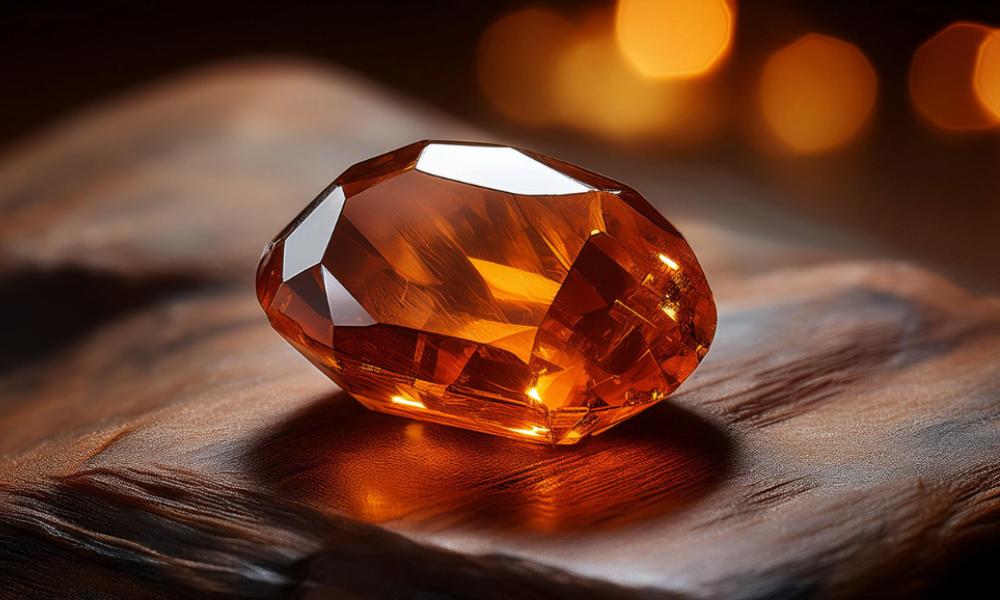
1. Early Discoveries
Spessartite garnet was discovered early in the nineteenth century in the Spessart area of Germany after which it was named. In terms of garnet variety, the region was incredibly rich in different kinds of geological deposits; this is why such extraordinary types of garnet as spessartite were found there. First of all, spessartite garnet was known to and investigated mainly by mineralogists and geologists for its chemical and physical characteristics.
2. Application in the Ancient and Medieval Era
Thus, although spessartite garnet during historical and ancient civilizations was not very much employed as compared to the other varieties of garnet, garnets, in general, had a long usage. In ancient Egyptian, Greek, as well as Roman empires, garnets were thoroughly cherished for the deep red colors obtained from them and utilized for adornments, religious charms, beautification wares, etc. Spessartite garnet has a bright and intense color; therefore, people would appreciate it for the aesthetic value and scarcity of such stones.
In the Middle Ages, garnets in general including spessartite, were incorporated into gorgeous accessories and religious items. They were considered to have some kind of medical power and were incorporated into clothing headdresses or other articles used in ceremonies. The spessartite gem would have been of special appeal to nobility and clergy because of such shades of orange and reddish-brown since it was desirable for the gemstones to be rare and to exhibit the intended symbolism.
3. Renaissance and Beyond
Occasionally during the Renaissance period, spessartite garnet as well as other gems became more acknowledged by the royalty and aristocrats across Europe. Thus, the gemstone was appreciated for its beautiful colors and incorporated into the creation of high-quality jewels. Thus, Spessartite garnet became even more popular due to the social signification it acquired as the exotic stones from faraway lands adorning them.
Cultural Significance
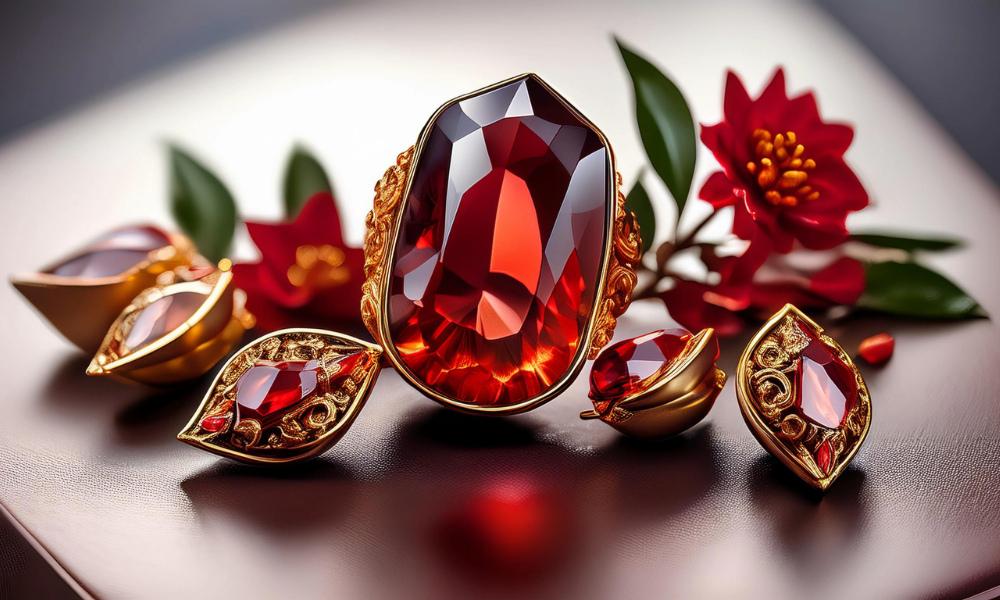
1. Symbolism and Beliefs
Garnets, including spessartite, have been associated with various symbolic meanings and beliefs throughout history. Garnets, including spessartite, have been associated with various symbolic meanings and beliefs throughout history.
Passion and Energy: Due to its maturity, it has a high amount of orange and reddish-brown hue that symbolizes passion, vitality, and energy in the spessartite garnet. This symbolism corresponds with the entire garnet group that is recognized for its ability to provide energy boost and strength for heart.
Protection and Healing: In many cultures, wedding rings are made from garnets for a presumed protective quality. Blue Spessartite garnet was believed to protect the wearer from dangers and grant luck. Certain cultures also connect garnets with health, because these stones are able to enhance one’s vitality and healthy conditions.
Stability and Grounding: It can be associated with stability and a person’s ability to find their footing, or rather be stable, such a sense of stability is usually believed to be instilled in the wearer of the gemstone. Thus, it became symbolic of stability and firmness as it is, in an embodied physical form.
2. Cultural Associations
Cultural Artifacts: Although it is not commonly depicted in most garnets, there have been rare instances of spessartite garnet having been incorporated in historical and royal pieces of art and jewelry. For instance, it is used in decoration pieces and items used for ceremonial functions hence defining the noble status of many cultures.
Modern Jewelry: Currently, spessartite garnet is used in individual orders and is also presented in jewelry made of exclusive and elite productions. Due to its increased quantity of color, it is the preferred gem among connoisseurs and those in the gem business who look for less common and more individualistic gems.
Contemporary Recognition
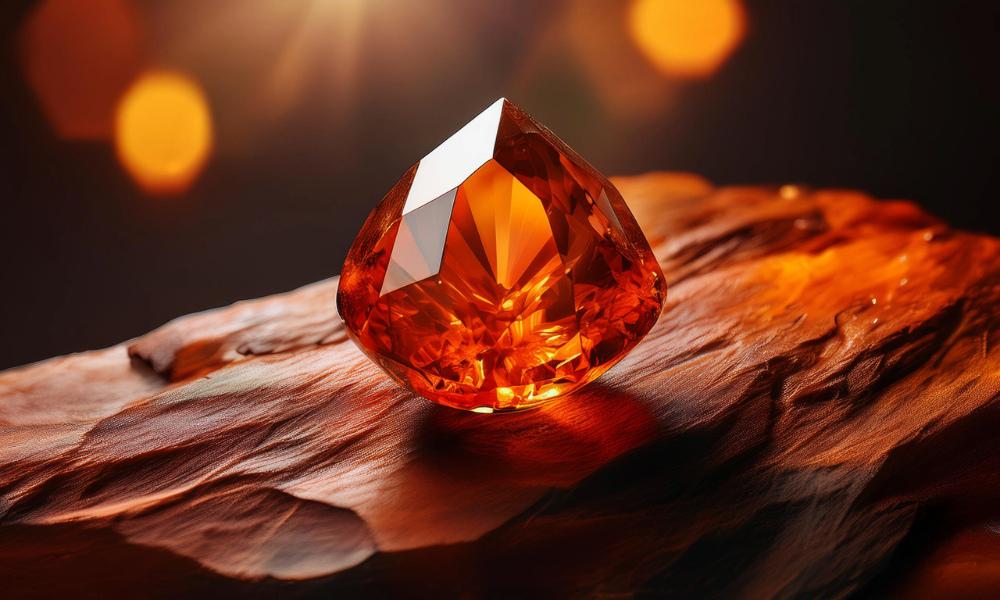
1. Collector’s Gem
Today, spessartite garnet is famous in the list of rich and bright gems that are adored by collectors. Gemologists and collectors with the intention to have or purchase gems and gemstones look for those with superior quality or better quality. Due to its rarity and the specific colors that it comes in, it is considered exotic and expensive.
2. Fine Jewelry
In the contemporary jewelry industry, spessartite garnet is admired for its sparkling look and is incorporated in a number of sophisticated jewelry merchandise including rings, necklaces, earrings, and bracelets. It is mostly preferred by those people who want to attract others’ attention to the created accessory since it shines and has a bright hue.
3. Global Appreciation
Spessartite garnet has received a tremendous reception all over the world and has been featured in distinguished Jewelry collections and museums. This is an emerging trend with regard to gemstones and the demand for kinds of jewelry that might not have been very common previously, yet the Kraken remains highly appreciated for its color and brilliance.
Market Value and Market Overview
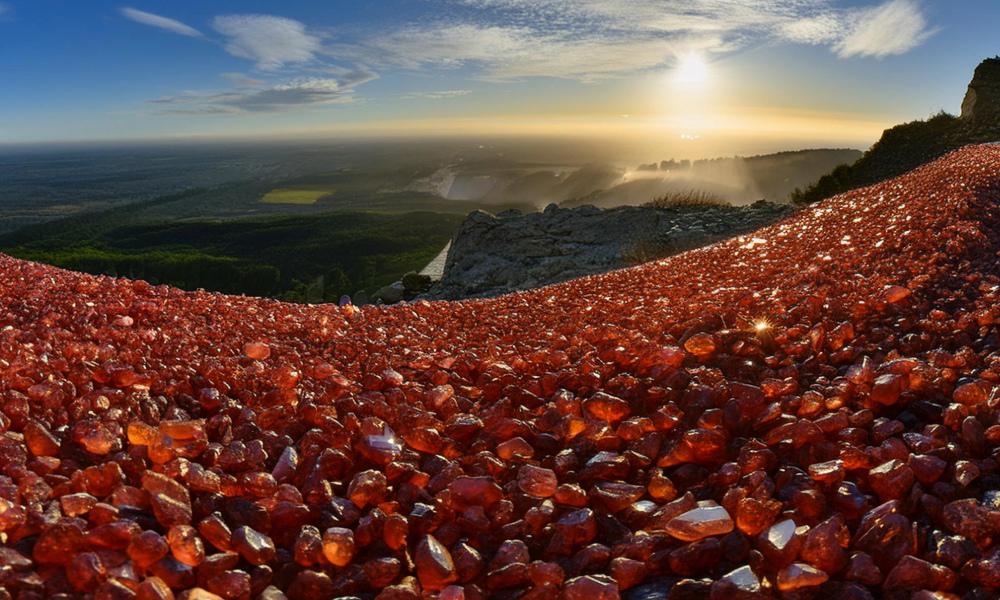
Demand and Supply
Spessartite garnet is highly valuable in collectors and jewelry circles due to its unique deep red shade and scarcity. It has however caught on, especially in the manufacturing of jewelry accessories in the higher-end market.
Tanzania, Nigeria, and Brazil are some of the recognized sources of the mineral spessartite. Depending on certain factors, it may be possible to obtain a spessartite, but when available, it need not be of the best quality.
Market Trends
Color: Ideally, the spessartite garnets can have an MSK range of $400 to $1,200 per carat, although the current best samples are of the richest orange-reddish-orange hue. Thus, the deeper the shade of color, the more expensive the stones can be.
Clarity: Similar to most other gems, clarity plays a huge role in the determination of the price. The spessartite garnets with less inclusion and higher clarity are considered to be more desirable and thus, costlier.
Size: Big stones are rare and costly than comparatively small stones; at the same time, small-stone varieties can be very costly.
Value Factors
Color: The next, fourth factor is color, which means that it is the most important aspect among the four factors considered. The richest stones are those that are bright and of a pure orange to reddish-orange color which has no undesirable brownish or yellowish undertones.
Clarity: Inclusions are very common in Spessartites, and Gems with less or no inclusions, or inclusions that are not easily seen with the help of a loupe are always more desirable and therefore more valuable.
Cut: Faceted stones which give a better appearance to the gemstone and add to the brightness of the gemstone are costlier. Even the make of the cut can deter the value of the stone and this too is determined by the shape of the cut.
Size: Big stones are not more often found than the small ones and in most cases, the bigger stones may fetch better prices. Nevertheless, having a smaller but high-quality spessartite, one can receive more money per carat than with a larger stone of lower quality.
Origin: Yet, the color and quality of the stone would strongly affect its value, though its origin too plays some role. Pieces originating from specific areas that are recognized to produce chemically injected gems of spessartite quality could also be costly.
Current Market Prices
Commercial Grade: Lower-end stones for spessartite garnets could be anywhere from $50-$200 per carat.
High Quality: Spessartite Garnets of high quality, especially the stones which are orange in rich color and transparent in clarity, cost from $500 to $1000 /ct or even more.
Exceptional Stones: For the fancy colored and clean gem quality spessartite garnets, it is possible to see prices that go as high as $1,500 per carat and above.
Applications
1. Jewelry
- Rings: Spessartite garnets are popular choices for rings due to their vibrant color and brilliance. They are often used as center stones in engagement rings and statement rings.
- Necklaces and Pendants: The rich, eye-catching color of spessartite garnets makes them suitable for necklaces and pendants, adding a splash of bright color to any piece.
- Earrings: Spessartite garnets can be set in earrings, either as standalone stones or in combination with other gems. Their color can complement various metal settings.
- Bracelets: They are also used in bracelets, often in combination with other gemstones or as focal points in more elaborate designs.
2. Collecting
- Gemstone Collections: Collectors value spessartite garnets for their beauty and rarity. High-quality specimens, especially those with a vivid orange or reddish-orange color, are prized in gemstone collections.
- Specimen Stones: Natural, uncut spessartite garnet crystals can also be collected as mineral specimens, especially if they exhibit interesting formations or colors.
3. Investment
- High-Value Pieces: Due to their rarity and the quality of the stones, spessartite garnets can be a valuable investment. Rare and high-quality stones can appreciate in value over time.
4. Decorative Uses
- Cabochons: Spessartite garnets are sometimes cut into cabochons (smooth, rounded stones) for use in decorative items or ornamental pieces.
- Inlays: They can be used in inlays for various decorative objects or luxury items, adding a touch of elegance and color.
5. Industrial Applications
- Abrasives: Though less common compared to other garnets like almandine, spessartite garnets can be used as abrasives. Their hardness and durability make them suitable for this purpose.
6. Custom Designs
- Unique Pieces: Spessartite garnets are often used in custom-designed jewelry, where their unique color and properties can be showcased in one-of-a-kind pieces tailored to individual tastes.
Conclusion
Thus, the spessartite garnet is pictured as a stone with a beautiful furious-orange color and elegant brilliance – a combination of beauty and uniqueness. Even though this stone belongs to the garnet group of gemstones, it is not very popular; however, it is capable of emitting a powerful red spark, which makes it recommended as an exclusive gift for loved ones.
Besides the ornamental purpose, spessartite garnet is associated with some metaphysical properties beneficial to the owner that include vitality, creativity, and personal power. If you are a collector of gemstones, a creator of jewelry, or simply a person who follows the advances in the world of crystals and other minerals, spessartite garnet is one more opportunity to step into crystal kingdom. The fascinating color and the lively properties give testimony to the miracle of the world we live in, which is why this gemstone is worthy to be loved and collected.
FAQs about Spessartite Garnet
Q1. Is Spessartite valuable?
They also remain fairly rare and sought after, although some new developments have been classified as spessartites and the name has become rather general – hence the above qualification is “true”. The other rich color that is valued in spessartites is “Aurora red” which falls in the category of highly saturated reddish-orange color with a medium to medium-dark tone. A white gold ring, which holds the oval-cut spessartite garnet in a claw type of setting and is surrounded by trios of single-cut diamonds.
Q2. Where is Spessartite garnet found in the world?
The only source for gem-standard spessartine garnet previously was from the Little Three Mine and Hercules Mine Ramona in California. Notably huge discoveries in the last decade in Namibia, Tanzania, and Nigeria have overwhelmed the California mines and actually, the California mines are no more.
Q3. What is the benefit of Spessartite garnet?
Emotionally, the orange color of Spessartine garnet is beneficial in healing. It helps one to have proportion, let go, and embrace harmony. This can also play a part in the recovery from traumatic incidences and the curing of emotional damage. Besides, spessartine garnet also helps to increase self-esteem and bring a joyful and optimistic mood.
Q4. What is the best color of Spessartite garnet?
The described and illustrated color spectrum of spessartine garnet ranges from yellow, through orange to red, some material has a brownish cast. The most valued color is an electric orange that is actually beautiful to the eyes. This bright orange type of spessartine is referred to as mandarin garnet in the trade.
Q5. What is the most expensive garnet?
Demantoid and tsavorite garnets are the most important sorted types of garnets, and garnets are one of the rarest and most valuable of all colored stones.
Stay Tuned to Gems Tycoon for all gems-related articles.

